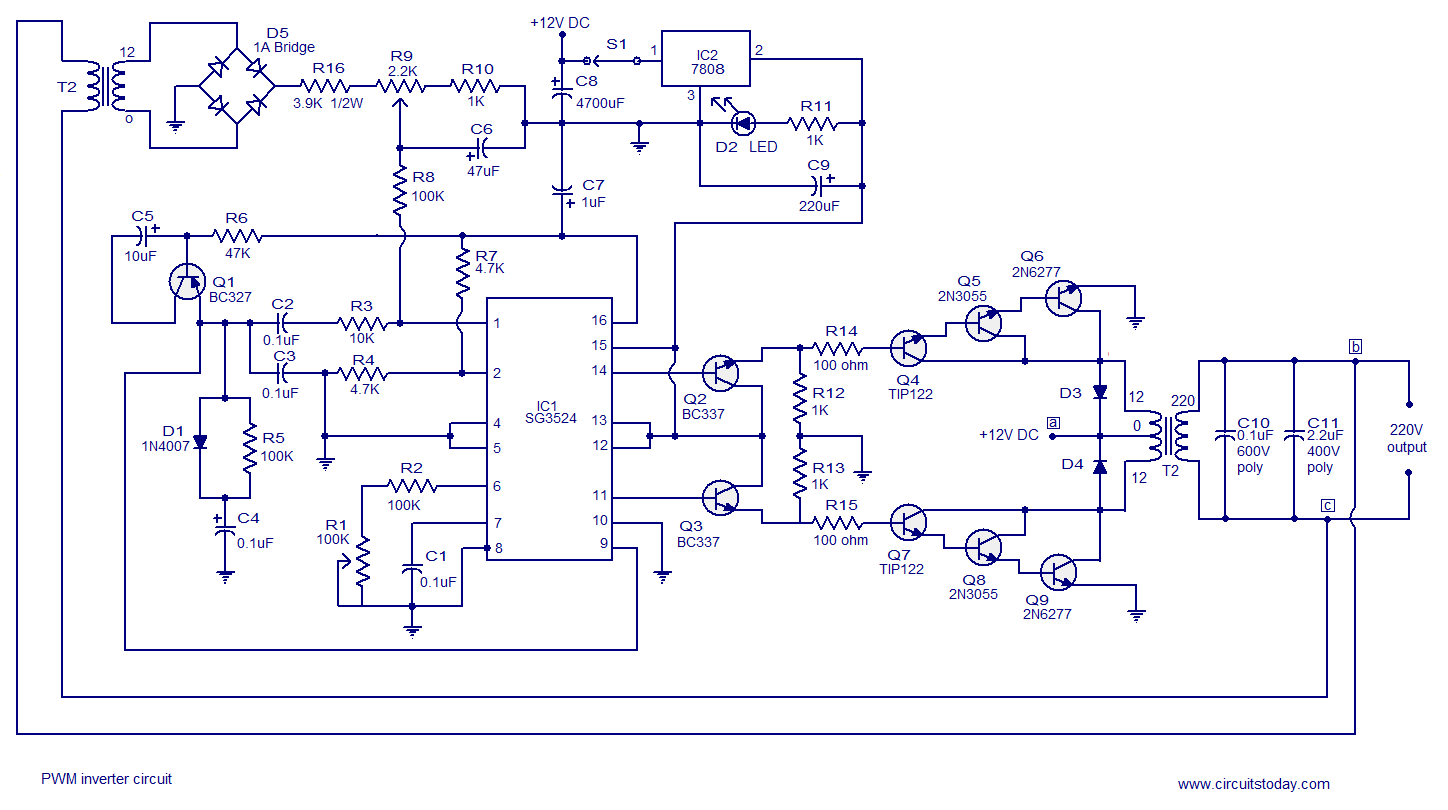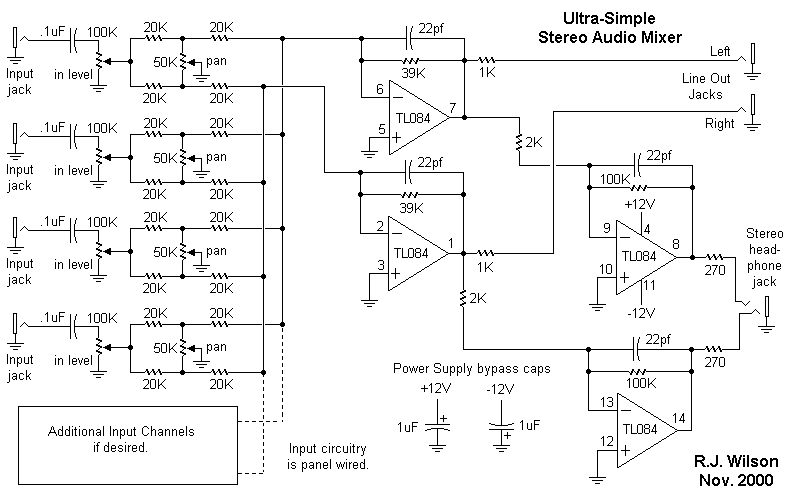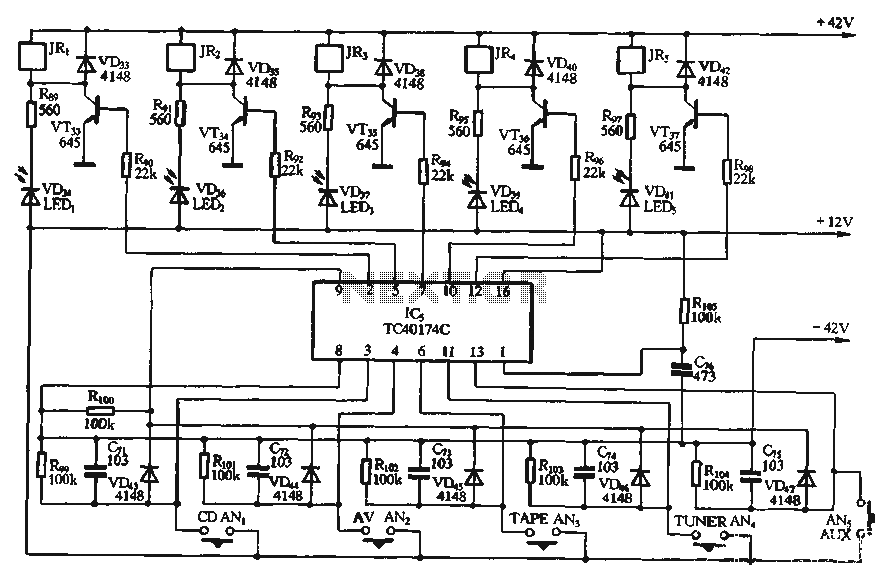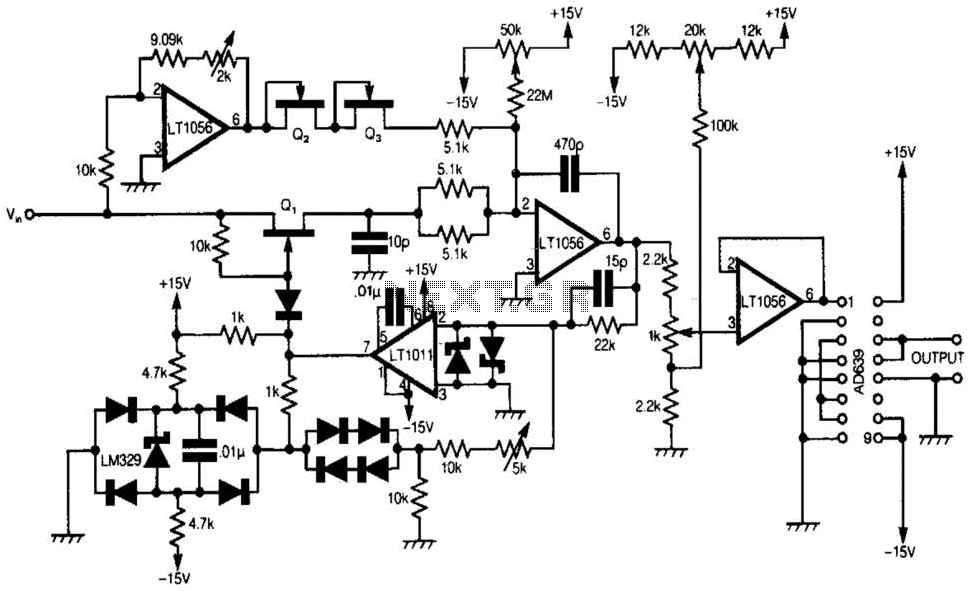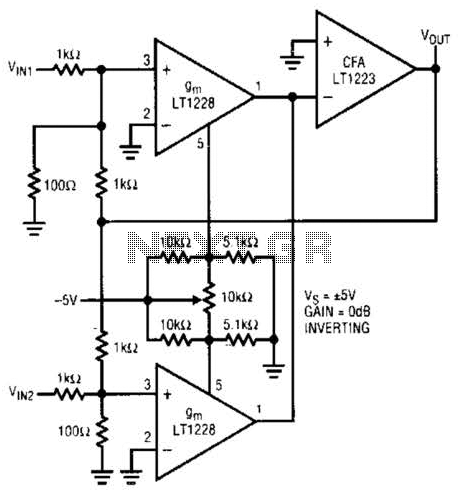
FOUR INPUT VIDEO MIXER

This circuit is utilized for combining four distinct positive-polarity marker pulses in a radar system. The reference for this information is the "Handbook Preferred Circuits Navy Aeronautical Electronic Equipment," Volume 1, Electron Tube Circuits, published in 1963, page N4-1.
The circuit for combining four positive-polarity marker pulses is essential in radar systems to ensure accurate signal processing and synchronization. The design typically employs a series of resistors and capacitors to manage the timing and amplitude of the incoming pulses. Each marker pulse is generated by separate components, which may include oscillators or pulse generators, and is then fed into a summing circuit.
The summing circuit could utilize operational amplifiers (op-amps) configured in a summing amplifier arrangement. This configuration allows for the integration of multiple input signals while maintaining the integrity of the positive-polarity characteristics. The use of feedback resistors in the op-amp circuit ensures that the output pulse maintains the desired amplitude and shape, suitable for further processing stages in the radar system.
Additionally, the circuit may include filters to eliminate any unwanted noise or interference that could affect the clarity of the combined markers. Proper grounding and shielding techniques are also crucial in radar applications to prevent electromagnetic interference from degrading the performance of the marker pulses.
In summary, the circuit's design focuses on effectively combining multiple positive-polarity marker pulses while ensuring stability and fidelity of the signals within the radar system. This functionality is vital for the accurate operation and performance of radar equipment in various applications.Used for combining four different positive-polarity marker pulses in radar system. -NBS, "Handbook Preferred Circuits Navy Aeronautical Electronic Equipment, " Vol. 1, Electron Tube Circuits, 1963, p N4-1. 🔗 External reference
The circuit for combining four positive-polarity marker pulses is essential in radar systems to ensure accurate signal processing and synchronization. The design typically employs a series of resistors and capacitors to manage the timing and amplitude of the incoming pulses. Each marker pulse is generated by separate components, which may include oscillators or pulse generators, and is then fed into a summing circuit.
The summing circuit could utilize operational amplifiers (op-amps) configured in a summing amplifier arrangement. This configuration allows for the integration of multiple input signals while maintaining the integrity of the positive-polarity characteristics. The use of feedback resistors in the op-amp circuit ensures that the output pulse maintains the desired amplitude and shape, suitable for further processing stages in the radar system.
Additionally, the circuit may include filters to eliminate any unwanted noise or interference that could affect the clarity of the combined markers. Proper grounding and shielding techniques are also crucial in radar applications to prevent electromagnetic interference from degrading the performance of the marker pulses.
In summary, the circuit's design focuses on effectively combining multiple positive-polarity marker pulses while ensuring stability and fidelity of the signals within the radar system. This functionality is vital for the accurate operation and performance of radar equipment in various applications.Used for combining four different positive-polarity marker pulses in radar system. -NBS, "Handbook Preferred Circuits Navy Aeronautical Electronic Equipment, " Vol. 1, Electron Tube Circuits, 1963, p N4-1. 🔗 External reference
